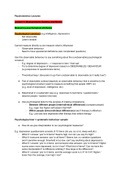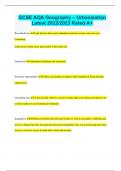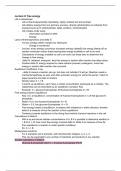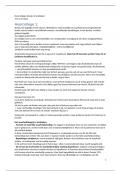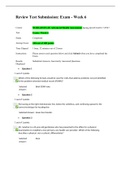Summary
Summary Psychometrics Lecture Notes
- Module
- Institution
This document contains lecture notes from ALL psychometrics lectures, as well as comments and remarks made from the lectures. It has everything you need that will help you pass the final exam!
[Show more]
